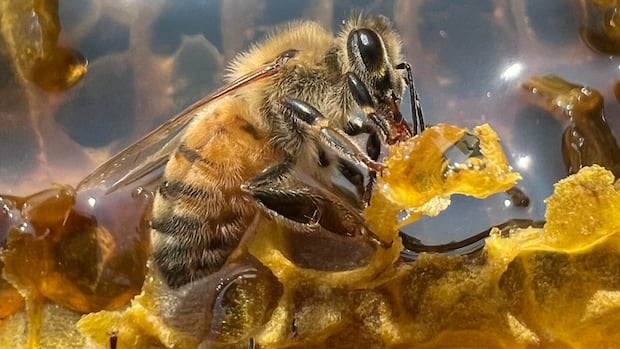Indigenous people fleeing wildfires face immense mental health burdens. Experts say they shouldn’t have to

Jeewa Liske, a pregnant woman from Yellowknife, had to make a harrowing 20-hour drive to safety amidst wildfire smoke in August 2023. At four months pregnant, the air quality in Yellowknife became unbearable, prompting Liske and three friends to evacuate to Edmonton. The visibility was so poor that Liske could barely see the sides of the road as they made their way to safety.
Upon arriving in Edmonton, Liske faced the difficult decision of whether to stay close to family in Leduc or live with her mother-in-law on Vancouver Island. After spending five days in Alberta, Liske ultimately flew to Victoria, where she experienced anxiety and separation from her spouse, who was working as a crew boss to fight the wildfires in the Northwest Territories.
The evacuation also meant that Liske struggled to receive prenatal checkups, adding to her stress and emotional turmoil. However, with the help of birth workers in N.W.T., she was able to connect with a midwife in Victoria and receive reassurance that her pregnancy was progressing normally.
Liske’s experience is just one example of how Indigenous people in Canada are disproportionately affected by wildfires, which are increasing in frequency and intensity due to climate change. Indigenous communities often live in areas that are more susceptible to wildfires, leading to higher rates of displacement and adverse mental health outcomes.
Psychologists, like Suzanne Stewart from the University of Toronto, emphasize the importance of providing mental health support during evacuations for Indigenous people. Stewart highlights the significance of addressing emotional and spiritual needs, as well as ensuring that accommodations are suitable and culturally sensitive.
Elisa Binon, a data coordinator, notes that Indigenous people are disproportionately impacted by internal displacements due to disasters like wildfires. Historical marginalization and forced relocations from traditional lands contribute to the vulnerability of Indigenous communities in disaster-prone areas.
To improve how wildfires evacuations are handled for Indigenous communities, Binon suggests allocating resources to meet specific needs, following Indigenous-based disaster plans, and implementing practices like cultural burns to reduce wildfire risks.
Despite the challenges and trauma of being displaced by wildfires, Liske and her family have found solace in their community and are grateful for clear skies free of smoke. As they continue to navigate the ongoing threat of wildfires, they remain resilient and hopeful for a brighter, safer future.




